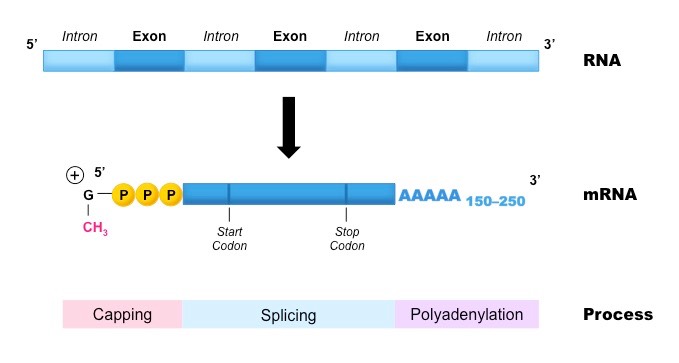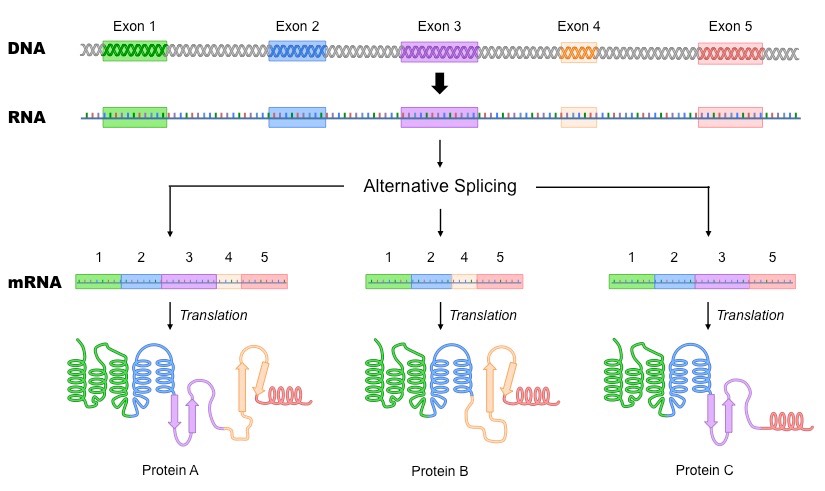![]()
Understanding:
• Eukaryotic cells modify mRNA after transcription
In eukaryotes, there are three post-transcriptional events that must occur in order to form mature messenger RNA:
Capping
- Capping involves the addition of a methyl group to the 5’-end of the transcribed RNA
- The methylated cap provides protection against degradation by exonucleases
- It also allows the transcript to be recognised by the cell’s translational machinery (e.g. nuclear export proteins and ribosome)
Polyadenylation
- Polyadenylation describes the addition of a long chain of adenine nucleotides (a poly-A tail) to the 3’-end of the transcript
- The poly-A tail improves the stability of the RNA transcript and facilitates its export from the nucleus
Splicing
- Within eukaryotic genes are non-coding sequences called introns, which must be removed prior to forming mature mRNA
- The coding regions are called exons and these are fused together when introns are removed to form a continuous sequence
- Introns are intruding sequences whereas exons are expressing sequences
- The process by which introns are removed is called splicing
Post-Transcriptional Modifications

![]()
Understanding:
• Splicing of mRNA increases the number of different proteins an organism can produce
Splicing can also result in the removal of exons – a process known as alternative splicing
The selective removal of specific exons will result in the formation of different polypeptides from a single gene sequence
- For example, a particular protein may be membrane-bound or cytosolic depending on the presence of an anchoring motif
Alternative Splicing

